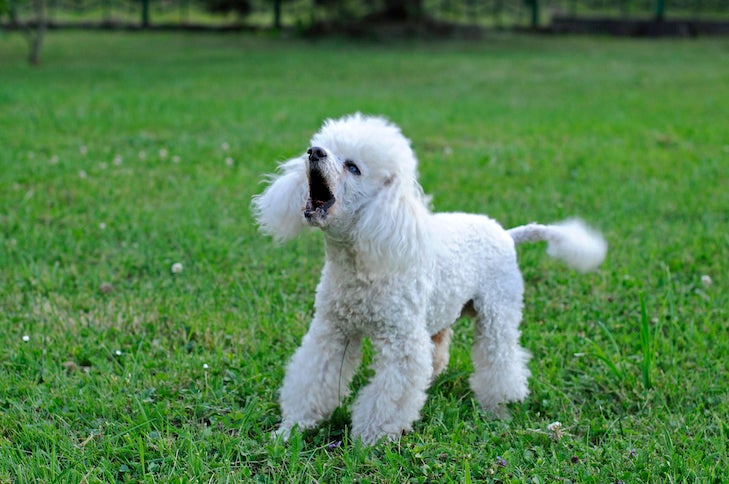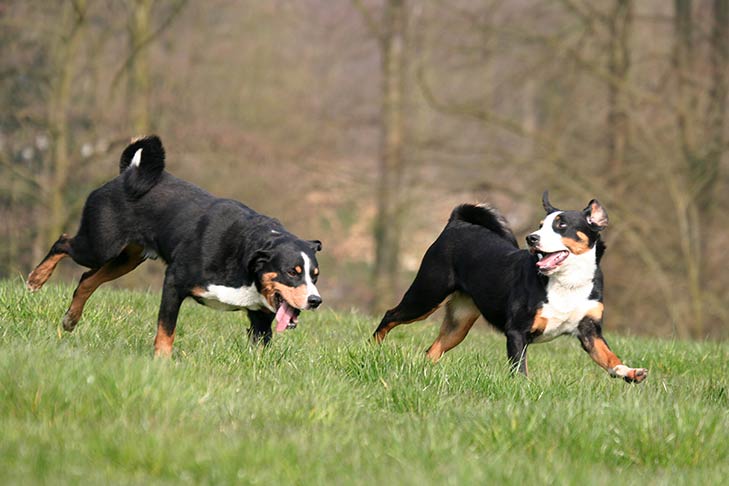
Yip, yap, woof, howl, snarl, growl, and grunt. The language your canine companion uses may be more complicated than you realize.
Dogs use their barks to show how they feel and to communicate with other dogs. The reason behind their bark can change depending on the situation. Excessive barking, however, can be more than annoying: it may be a behavioral problem.
Part of responsible dog ownership is deciphering these barks so you can take care of your canine companion.
Why Do Dogs Bark at Each Other?
Besides body language and scent, barking is their natural way to communicate. Barking may be emotional, to show that they are frightened, excited, or lonely. It can also be situational to convey protection or to alert you to danger.
Certain breeds bark more than others. Some dogs were bred to be better barkers, to help hunters or to protect homes. Yorkshire Terriers, Beagles, and Chihuahuas are all known for being vocal.
Each type of barking serves a purpose. When you repeatedly reward a dog for their barking — like for food, play, treats, or walks — dogs will learn to use barking for their benefit. There are all kinds of reasons dogs bark at other canines:
Playfulness
Some dogs just want to be fur-friends with everyone. Many dogs will bark when playing with dogs or people to show how excited they are. These playful growls are signs of happiness. These barks are sometimes accompanied by a “play bow” when dogs bow their front legs and wag their tails.
Territorial Behavior
It’s natural for dogs to bark when someone is at the door, when people are walking by, or when they see animals on their territory. A dog typically considers their home their territory, but anyplace they associate with themselves or you can be their territory: even your yard, block, car, and walk routes.
Dogs will also bark at other dogs outside their door to tell them that this is their territory. It’s their way of saying, “I live here and I’m protecting my home.”
Attention-Seeking
Some dogs bark at people or other dogs to get attention or rewards like toys, treats, and cuddles.
Separation Anxiety
Dogs with separation anxiety, fears, and phobias may bark to self-soothe. Some dogs will excessively bark when they are left alone or when their humans are gone. This type of barking is typically high-pitched. If separation anxiety is the cause of the barking, it’s time to work with a specialist or trainer.
Fear or Anger
For small dogs, a big bark is their biggest weapon against bigger predators, like big dogs. It can also be a bark or growl of warning. These barks tend to be lower pitched and last longer. Dogs may react with a growl like this if another dog was playing too rough or got too close to their food.
Excitement
Some dogs will bark excitedly when it’s time to go on a walk or car ride.

Undersocialization
Some dogs don’t understand how to socialize with other dogs. This could be because they haven’t had many chances to interact with other dogs or because they haven’t been trained. They may become nervous because they don’t know how to interact with other dogs.
This nervousness can lead to reactivity: pulling or lunging on their leash to get away from other dogs or barking at them to say, “stay away!”
Social
While some dogs bark because they haven’t been socialized, others bark to socialize! Some dogs will chime in with a few barks when they hear other dogs barking in the neighborhood or park. They don’t even need to see the other dogs to socially greet them with a bark.
Greeting
Dogs might bark when they are greeting a person or another dog. These dogs will bark, or even whine, along with wagging their tail and other excited behavior.
Fight or Flight
When dogs behind a gate, fence, or window, inside a crate, or tethered to a leash, they are restrained. If they see another dog, they don’t have any way to react. They can’t greet or run away from the dog or even smell them. They also don’t have any way, aside from barking, to tell dogs to go away. Your dog may become frustrated and react by barking at any dogs they see.
Frustrated Greeting
Some dogs love spending time with other dogs. They may spend their days in doggie daycares, puppy classes, or dog parks and have no problems with other dogs. But for some reason, these same dogs bark and lunge at other dogs while they are on a walk.
This behavior is because your dog is frustrated that they can’t say hello to all the other dogs they see. They want to say hello, but the leash prevents them from going over to the other dog. Frustrated, they bark. This behavior repeats because each time they see another dog, they get upset again. This problem can also happen because they used to be able to say hello to other dogs, perhaps during puppyhood, but are no longer allowed.
Boredom
A bored dog will bark because they are lonely, want attention, and have pent-up energy. These bored dogs typically just need some attention, often in the form of walks, cuddles, or playtime. It might even be a way of telling you it’s time for another four-legged friend in their life!
Aggression
In most cases, dogs that bark aren’t being aggressive. Barking is basically a threat designed to keep others away, but it’s not violent.
How to Prevent Excessive Problem Barking
Most dogs bark, but there are ways to curb the habit. The best way to prevent problem barking is to control your dog’s environment and remove any potential causes inciting the behavior. This might mean varying walk routes so your dog doesn’t get bored with the same routine and to avoid specific places.
It is possible to train dogs to bark less. It’s a good idea to work with a trainer to teach your dog the “Speak” or “Quiet” commands. The “Heel” command may also help your dog stay calm in public and lessen the barking.
You also need to stay calm with your dog in public — if you become tense, your dog will pick up on it. Staying calm with your dog will help them stay calm.
You can also choose a breed that has a low tendency to bark, though all dogs make some noise. Some breeds, like Akitas, Afghan Hounds, Greyhounds, and Saint Bernards, are known for their quiet demeanor. You could even go with a Basenji, a breed known for its yodel.

